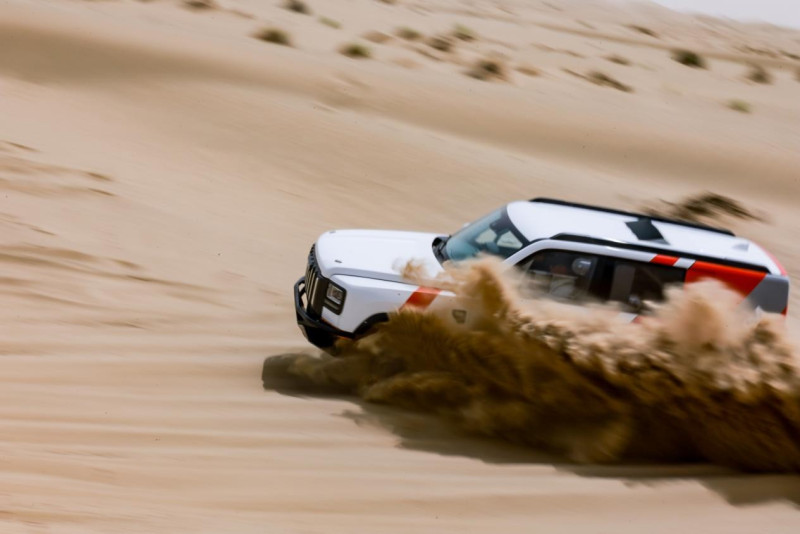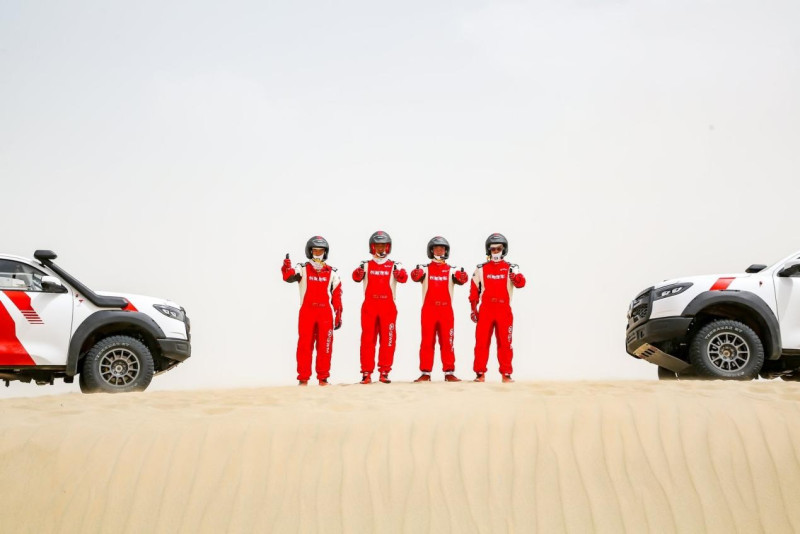GWM Returns to the Taklimakan Rally with Factory Models and Bold Confidence


AKSU, CHINA – Deep in the heart of China’s largest desert, the 2025 Taklimakan Rally flagged off on May 20, reigniting what’s long been called the “Dakar of Asia.” With sand, rock, and scorching heat as the backdrop, this extreme endurance race isn’t just a test of grit—it’s a full-throttle gauntlet for man and machine. This year, Great Wall Motor (GWM) returns to the rally it once dominated, fielding a full team of factory-built vehicles—no prototypes, no concept cars, just actual models available at the showroom.
It’s been 10 years since GWM last took home the overall win, and this time, they’re back with more than just ambition. They’re bringing a fleet that represents their major product lines: the HAVAL B26 and H9, the TANK300 Hi4-T, TANK400 Hi4-T, TANK500 Hi4-Z, and the POER V6 pickup. What’s noteworthy? These are not one-off race-prepped machines. Aside from essential safety modifications like roll cages and fire suppression systems, these vehicles run on the same engines and transmissions you’d get if you drove one off the lot.
This is GWM’s way of putting their R&D, quality control, and durability claims to the ultimate test—by racing showroom-spec units across one of the harshest landscapes on Earth. If a car can survive Taklimakan, it’ll survive anything.

HAVAL is entering the fray with both gasoline and diesel versions of the B26 and H9, carrying the flag for hardcore, mass-market SUVs. Known for their rugged build and all-terrain tech, these models are here not just to compete—but to prove HAVAL’s credentials as a true “global SUV expert.”
Meanwhile, the TANK division is charging into new territory—literally and figuratively. The TANK300, 400, and 500 Hi4 variants are entering under the rally’s newly established NEV (New Energy Vehicle) category. These plug-in hybrids and electrified drivetrains are built to test not just endurance but efficiency, delivering serious torque while managing energy use across punishing dunes, rocky outcrops, and searing heat.
The real dark horse might just be the POER V6 pickup. Powered by GWM’s in-house developed 3.0-liter twin-turbo engine, this muscular machine is out to prove that Chinese pickups aren’t just for hauling—they’re built for hammering desert trails with explosive power and razor-sharp throttle response.
Together, these vehicles form a united GWM rally assault that ignores traditional boundaries between powertrain types, product categories, and consumer vs. competition lines. The company’s “Smart Off-Road” philosophy is alive in every vehicle, combining brute capability with cutting-edge tech.

The Taklimakan Rally, now an internationally sanctioned FIA event, has grown into one of the world’s toughest rallies. Since its founding in 2005, the race has evolved into a showcase for advanced engineering, driver bravery, and stunning natural backdrops. The 2025 edition covers over 4,500 kilometers, including 2,350 kilometers of timed special stages, cutting through Xinjiang’s Aksu, Kashgar, and Hotan regions. That’s deserts, gobi terrain, yardangs, and everything in between—65% of it sand.
This year’s rally is more than a contest—it’s a living laboratory. For GWM, every kilometer run is data gathered, problems uncovered, and potential enhancements revealed. From chassis dynamics and suspension tuning to powertrain thermal management and drivetrain calibration, the desert becomes both crucible and classroom. It’s not just about crossing the finish line—it’s about building better vehicles for the real world.
Running from May 20 to June 1, the Taklimakan Rally pushes every participant to the edge—physically, mentally, and mechanically. And while only one team can win, every vehicle that survives earns its badge of honor. For GWM, this isn’t just a race—it’s a statement. And they’re making it loud and clear, one dune at a time.







